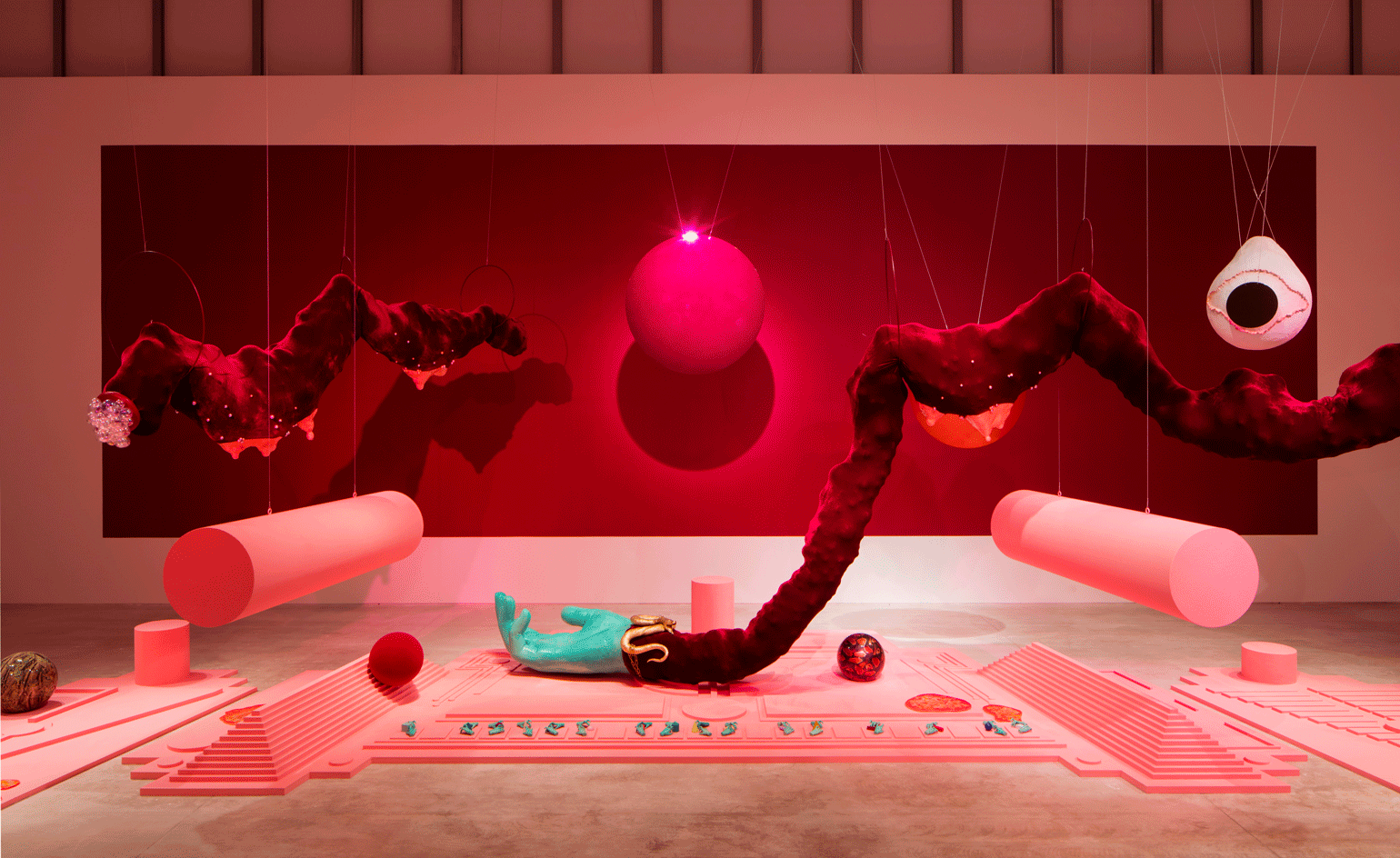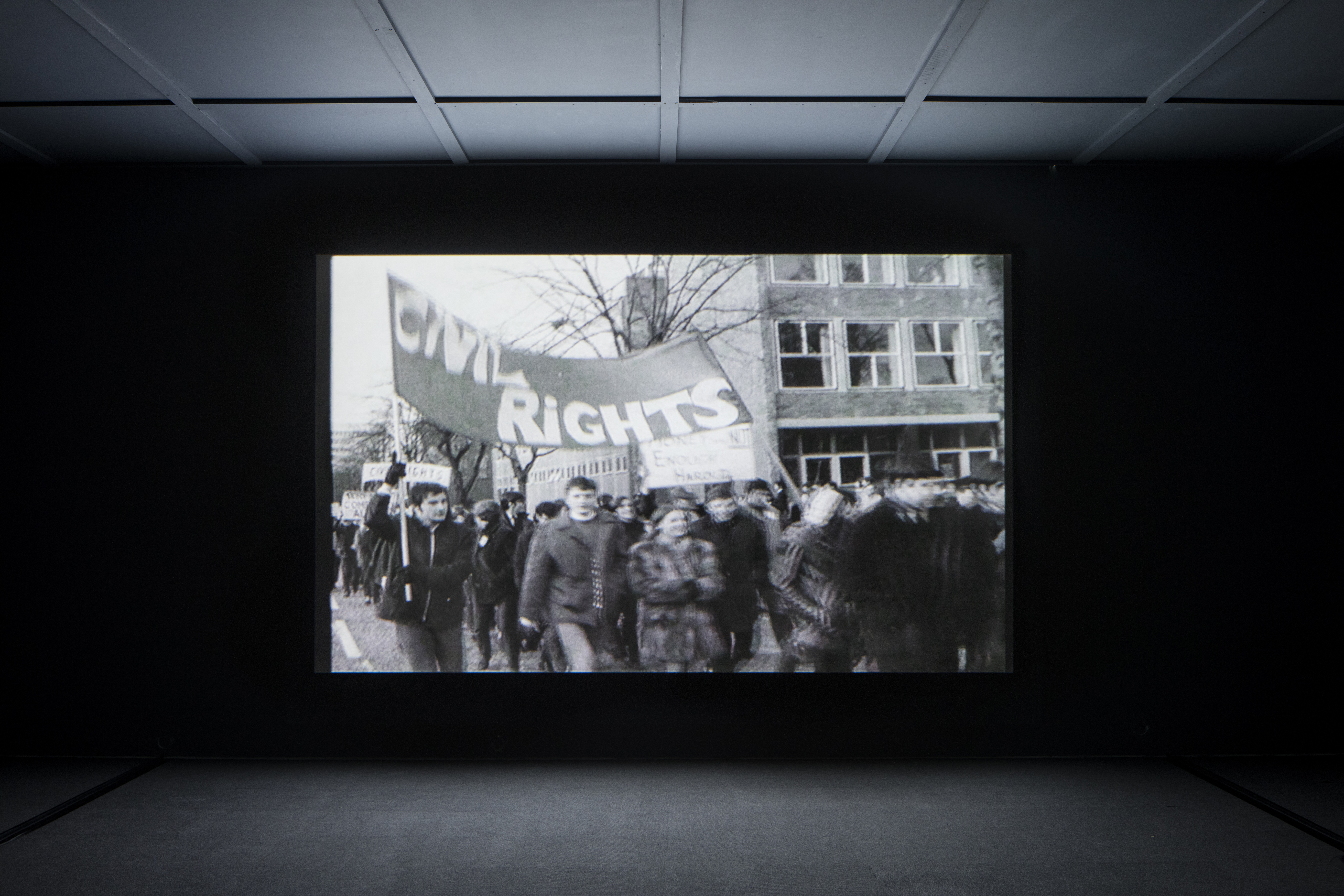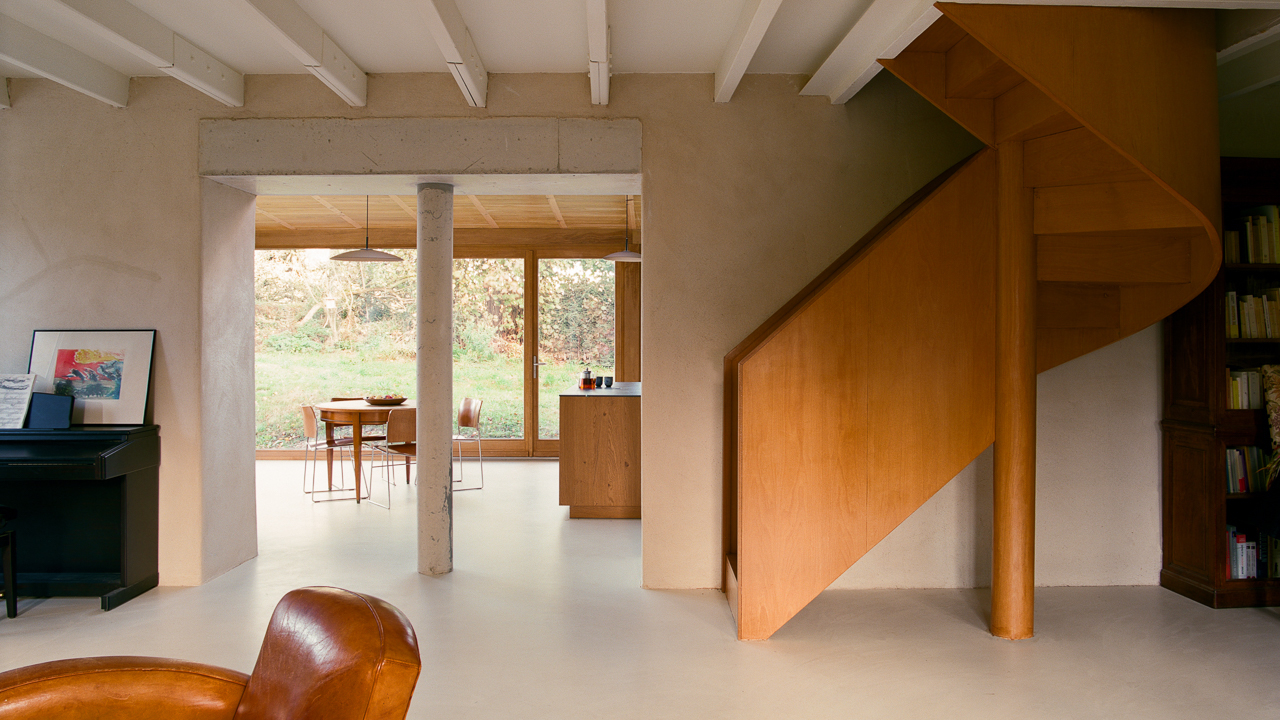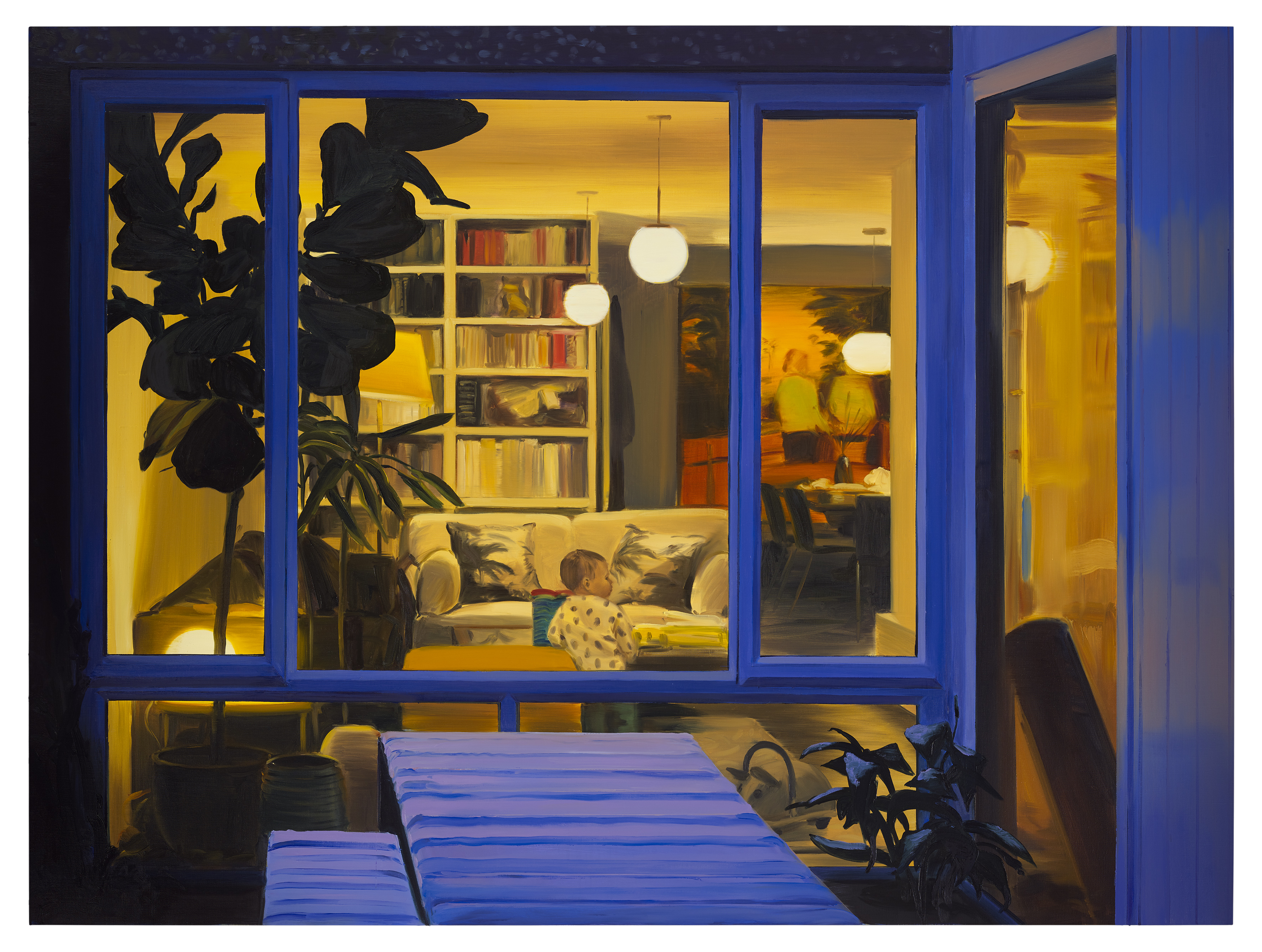The collective voice of the 2019 Turner Prize winners
It was announced this evening that the Turner Prize 2019 – featuring Lawrence Abu Hamdan, Helen Cammock, Oscar Murillo, and Tai Shani – has been awarded to a collective bringing together the nominated artists. The four nominees came together to request that the jury consider awarding the Prize to them as a collective. In recognition of these artists’ shared commitment to urgent social and political causes, the jury unanimously decided to honour that request. Below, read our take on the Prize, first published in September

It's all very British. The train is delayed from London to Margate, the sky is a special kind of UK-grey, and the horizon has been impressionistically smudged by drizzle. On Margate beachfront, the red plastic flames of Flamingo's Amusements lick up the walls near the shelter where, in 1921, TS Eliot sat to write part III of The Waste Land. A seagull drops a briny chip on my umbrella.
There are no better circumstances to view the best of contemporary British art at this year's Turner Prize exhibition. Since 2007, the prize has left its home at Tate Britain to be hosted by a location across the UK. 2019 marks the first time the award has been exhibited at the David Chipperfield-designed Turner Contemporary in Margate – but despite this, it feels like it has come home. JMW Turner (the Prize’s namesake) came to Margate frequently, inspired by the expanse of sea and sky that frames this pocket of Kent.

Collective Conscience, 2019, by Oscar Murillo.
This year's shortlisted artists – Lawrence Abu Hamdan, Helen Cammock, Oscar Murillo, and Tai Shani – present a diverse and varied snapshot of contemporary British art, in all its multiplicity. Each display, though unique in medium and method, shares a sense of difficulty. It's not easy viewing, with themes of injustice, violence, and silencing, common to each. ‘The Turner Prize exhibition has traditionally created debate and even controversy,' says Turner Contemporary director Victoria Pomery. ‘This year, we hope that conversations around the Turner Prize exhibition will enrich, challenge and create a legacy.'
Three of the four shortlisted artists' presentations share an interest in language. Self-titled ‘private ear’, musician and artist Lawrence Abu Hamdan (our tip for the win) presents an audio-visual juggernaut, drawing on research undertaken as part of an investigation commissioned by Amnesty International, into ‘ear-witness’ accounts from six survivors of the Syrian regime prison of Saydnaya. The prison’s architecture was designed to funnel the sounds of each cell to a central point, subjecting inmates to constant auditory surveillance and torture.

After SFX, 2018, by Lawrence Abu Hamdan.
In the installation, poignant written testimony appears on a screen in a blackened room, to a soundtrack of audio cues made by Abu Hamdan, alongside the Saydnaya survivors, and research agency Forensic Architecture, based at Goldsmiths University, London. Together, they recreated the sounds the prisoners remember hearing (from doors locking, to bread being dropped onto cell floors, to the sound of JCB diggers outside). Often, Abu Hamdan would use found sounds – from popcorn makers to a Nokia ringtone – and digital manipulation to jog the survivor’s audial memory. The resultantly eery score reverberates around the room, and a packed audience is hooked, as if in the cinema – a rare sight in an art gallery, where more often that not, work is looked at by many, but only truly seen by few.
Language appears again in Helen Cammock’s practise. Her film The Long Note is a collage of voices conveying the largely hidden power of women in the Northern Ireland civil rights movement. She incorporates different types of text – prose, song, journalism, philosophy – questioning ‘who is representing who, and for whom?’. Cementing this interest in language as a representational tool, a table strewn with books on Irish history tempts guests to sit down and read, and a series of colourful prints convey simple and profound messages.

The Long Note, 2018, by Helen Cammock. Courtesy of the artist
The pink extravaganza of Tai Shani's installation may trick the senses into a feeling of relative safety. We're in easy Instagrammable territory, but her feminist sci-fi installation lingers longer than a double tap. Dense with references, it takes as its starting point Christine de Pizan’s 1405 work The Book of the City of Ladies, in which the author creates an allegorical city made up of virtuous women, both real and mythical, from the past, present and future, who shape the structures of the city itself. Accompanying the giant pink swathes of fabric, swinging udders and suggestive balloons, is a film and audio element that narrates obscure passages from the book.
Stepping momentarily away from literature, and into art history, Oscar Murillo is the first Turner Prize artist to present the work of someone else as part of their exhibition. Surrounding John Watson Nicol’s 1883 oil painting Lochaber No Morepresents, Murillo creates a display of curtain-like sculptures that reference Monet’s water lillies, and wrap around the room, blotting out the view. Inside, pews of papier-mâché human figures sit surreally. The life-size effigies are inspired by the Colombian tradition of making models to be burnt at New Year, exploring themes of labour and migration.
Born in Yorkshire, Abu Hamdan acknowledges that – as a kid growing up outside of London – the Turner Prize was his first interaction with contemporary art. He says, ‘It is one of a few, very rare moments in which contemporary art briefly expands out of its industry bubble.’ The inherent ‘Britishness’ of the award is showcased here in its country-wide level of engagement, and its apparent commitment to diversity, and different definitions of what ‘art’ is. We jump from song to score to sculpture, from Ireland to Columbia to somewhere deep in feminist outer-space – and it's still only an hour outside of London (if the trains run on time).
INFORMATION
turnercontemporary.org
Receive our daily digest of inspiration, escapism and design stories from around the world direct to your inbox.
Elly Parsons is the Digital Editor of Wallpaper*, where she oversees Wallpaper.com and its social platforms. She has been with the brand since 2015 in various roles, spending time as digital writer – specialising in art, technology and contemporary culture – and as deputy digital editor. She was shortlisted for a PPA Award in 2017, has written extensively for many publications, and has contributed to three books. She is a guest lecturer in digital journalism at Goldsmiths University, London, where she also holds a masters degree in creative writing. Now, her main areas of expertise include content strategy, audience engagement, and social media.
-
 The Bombardier Global 8000 flies faster and higher to make the most of your time in the air
The Bombardier Global 8000 flies faster and higher to make the most of your time in the airA wellness machine with wings: Bombardier’s new Global 8000 isn’t quite a spa in the sky, but the Canadian manufacturer reckons its flagship business jet will give your health a boost
-
 A former fisherman’s cottage in Brittany is transformed by a new timber extension
A former fisherman’s cottage in Brittany is transformed by a new timber extensionParis-based architects A-platz have woven new elements into the stone fabric of this traditional Breton cottage
-
 New York's members-only boom shows no sign of stopping – and it's about to get even more niche
New York's members-only boom shows no sign of stopping – and it's about to get even more nicheFrom bathing clubs to listening bars, gatekeeping is back in a big way. Here's what's driving the wave of exclusivity
-
 Riccardo Dalisi’s first UK retrospective opens at east London gallery Spazio Leone
Riccardo Dalisi’s first UK retrospective opens at east London gallery Spazio LeoneSpazio Leone draws together six decades of the Italian visionary’s work, from whimsical coffee pots to radical community workshops
-
 Inside the fight to keep an iconic Barbara Hepworth sculpture in the UK
Inside the fight to keep an iconic Barbara Hepworth sculpture in the UK‘Sculpture with Colour’ captures a pivotal moment in Hepworth’s career. When it was sold to an overseas buyer, UK institutions launched a campaign to keep it in the country
-
 Thirty-five years after its creation, Lynn Hershman Leeson’s seminal video is as poignant as ever
Thirty-five years after its creation, Lynn Hershman Leeson’s seminal video is as poignant as everLynn Hershman Leeson’s 'Desire Inc', at 243 Luz in Margate, blurs the boundaries between art and reality
-
 A bespoke 40m mixed-media dragon is the centrepiece of Glastonbury’s new chill-out area
A bespoke 40m mixed-media dragon is the centrepiece of Glastonbury’s new chill-out areaNew for 2025 is Dragon's Tail – a space to offer some calm within Glastonbury’s late-night area with artwork by Edgar Phillips at its heart
-
 Lubaina Himid and Magda Stawarska’s new show at Kettle’s Yard will uncover the missing narratives in everyday life stories
Lubaina Himid and Magda Stawarska’s new show at Kettle’s Yard will uncover the missing narratives in everyday life storiesThe artists and partners in life are collaborating on an immersive takeover of Kettle’s Yard, Cambridge, in an exhibition that delves into a lost literary legacy
-
 See the fruits of Niki de Saint Phalle and Jean Tinguely's creative and romantic union at Hauser & Wirth Somerset
See the fruits of Niki de Saint Phalle and Jean Tinguely's creative and romantic union at Hauser & Wirth SomersetAn intimate exhibition at Hauser & Wirth Somerset explores three decades of a creative partnership
-
 Caroline Walker's new show speaks to women everywhere, including me
Caroline Walker's new show speaks to women everywhere, including me'Everything related to my life with young children, because it's such an all encompassing experience,' the artist says of her new show at the Hepworth Wakefield
-
 Cassi Namoda is rethinking stained-glass windows at Turner Contemporary in Margate
Cassi Namoda is rethinking stained-glass windows at Turner Contemporary in MargateThe artist drew from an eclectic range of references when considering the traditional medium for a Turner Contemporary window overlooking the beach – she tells us more